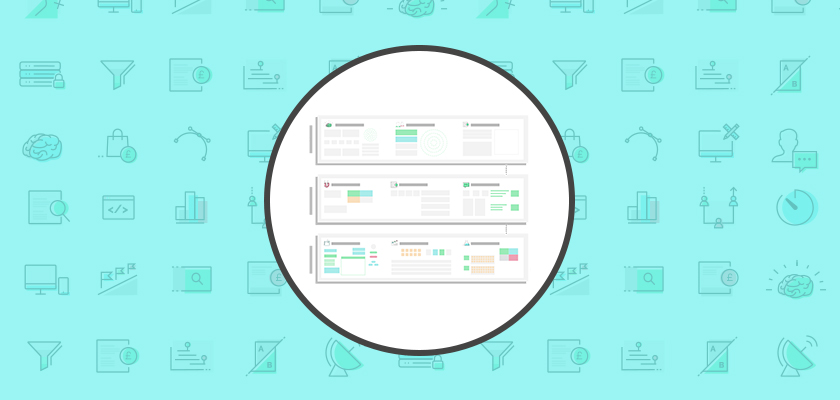How to Upgrade to Google Analytics 4? Now or Later
Here we will talk about how to upgrade to Google Analytics 4. Google Analytics is the service that enables you to monitor any kind of traffic and event that is connected to your channels. Now, they put forward a...

Here we will talk about how to upgrade to Google Analytics 4.
Google Analytics is the service that enables you to monitor any kind of traffic and event that is connected to your channels. Now, they put forward a new and upgraded property named Google Analytics 4 (GA4).
It is the latest evolution of Google Analytics after Universal Analytics (UA) which has been used commonly. Google Analytics changes various features of its property by GA4.
In this article, we will reveal:
What is GA4?Differences between GA4 and Universal AnalyticsWhen should you upgrade to GA4?How to upgrade to Google Analytics 4?What is GA4?
Google announced that they would retire Universal Analytics, and the only performing property on the platform will be Google Analytics 4.
As a result, UA will stop collecting and processing data on 1st July 2023, but you will be able to reach your historical data for a time after that date. But from that date, your new data will be collected in GA4 properties.
The most outstanding feature of the GA4 upgrade is that it combines data from mobile app and website into a single Google Analytics property.
Google Analytics changes its focus on customer privacy with GA4. It centers upon the current privacy law such as General Data Protection Regulation (GDPR) and The California Consumer Privacy Act (CCPA).
Moreover, the GA4 upgrade allows you to track traffic with high priority to privacy. It is called the “privacy-first” approach and cross-channel data collection and measurement. It also is an upgrade from session-based data of UA to event-based data of GA4.
Another critical point: it enables you to have accurate predictive analysis with the machine learning capabilities of Google. For example, through machine learning, you can fill out data about your website or app traffic and comprehend user behavior more accurately.
It tracks visitors’ behaviors from the first visit to the last click. These all make it available to trace user journeys more effectively and widely. That’s what Google Analytics 4 intends to provide.
Differences between GA4 and Universal Analytics
The differences between GA4 and UA resulted from the technological evolvements that are increasing daily.
Using mobile apps has improved machine learning. And new customer privacy laws have forced Google Analytics to update its properties. GA4, this latest property of Google Analytics, is designed following these updates and the current needs of analytics.
There are multifold changes GA4 brings up. Here we reveal the five significant differences between GA4 and UA.
Data Analysis from Application and Web
While UA only collects data from your website, GA4 enables you to collect and analyze data from your website and application.
It unifies all data into one collection and makes tracking and analyzing your users’ journey across all devices easier.
Machine Learning
GA4 pledges that the prediction based on user behavior is one of the significant upgrades of GA4. It uses machine learning predictive metrics to track and analyze user journeys and make it available for you to make predictions about your next steps and plans.
The tool is a customer-behavior-based property, and it traces the steps of your customers from beginning to end. It analysis all the behaviors of users and predicts consistent prospects by filling the gaps in user journey by using machine learning facilities.
Data Streams
Another essential difference between the GA4 upgrade and UA is data streams.
Data streams collect data from various sources into one property. UA uses to collect data from each source separately and filter them according to your need. GA4 enables you to link all data sources like websites and apps into a single property.
Event-Based Data
A significant difference between GA4 and UA is event-based data.
UA uses a session-based model, briefly a model that tracks user behavior by sessions that are started with the stored cookie in the visitor’s browser.
GA4 adds events to sessions. You can still see and use session-based data, but you will benefit from cross-device reporting with the event-based model.
Privacy Consent
With the privacy regulations like GDPR and CCPA, some difficulties have occurred for organizations to collect data from people who do not admit the tracking.
GA4 upgrade has some changes in terms of the privacy of users. For example, GA4 automatically anonymizes IP addresses, and it has a privacy consent mode to downshift the effects of GDPR.
This mode will help you to report content, conversions, and attribution even if you can not reach the users and can not directly identify them.
By this conversion model, GA4 aims to decrease missing data based on privacy regulations.
How to upgrade to Google Analytics 4?
It is not so complicated to upgrade to GA4. If you are using Google Tag Manager, here are the steps for you:
First, log into your Google Analytics account.Next, go to the Admin panel.Click on ‘GA4 Setup Assistant’.Next, click on ‘Get Started.’Finally, click on ‘Create Property.’Your GA4 property is ready.Log into your Google Analytics account.
Log into your account in Google Analytics. When you log in, find the Admin panel.
Go to the Admin panel.
You will see the ‘GA4 Setup Assistant’ at the top of the ‘Property’ column in the admin panel.
Click on ‘GA4 Setup Assistant’
When you tap this button, you are ready to launch the upgrade. Then you will see two options:
– Create a new GA4 property
– Connect with an existing GA4 property
Click on ‘Get Started’
If you have a UA property, you should tap the ‘Get Started’ button under ‘Create a New GA4 Property’.
At this stage, the wizard gives you some factual information:
– Your new GA4 property will not contain your historical data
– GA4 property only copies basic settings
– It enables Enhanced Measurement
Click on ‘Create Property’
Then you should click on ‘Create Property.’ Voila, you have created your GA4 property. Then you should add the tag to your website.
Your GA4 property is Ready
Click ‘See Your GA4 Property’ to monitor your new property. You can now begin to customize it for your need.
You should add your GA4 tag to your website or app, adjust the data stream you want to apply, and add triggers. Finally, you can confirm the flow of data by Tag Assistant reporting from the ‘DebugView’ segment. You can get more detailed information about upgrading to GA4 check here.
When Should You Upgrade to GA4?
You can upgrade to GA4 until st July 2023. So it is better to upgrade it quickly to familiarize yourself with the new options GA4 enables you. But there are some points that you should keep in mind.
Upgrade to GA4 does not bring your historical data to this property. Your historical data kept in your UA account will safely stay there; however, UA will not collect any new data from that day on. So you will start with a clear and empty data history in GA4.
Historical data is essential for any organization to draw insights and make decisions well-informed. In addition, it allows you to make comparisons and understand the course of events.
So, we strongly recommend you keep both of these properties to access your historical data. Then, you can switch between them to connect your historical data.
Moreover, if you upgrade to GA4 as quickly as possible, you can use it to create historical data for at least one year in this property. And this will be an advantage for your organization.
So do not wait until July 2023 to upgrade to GA4, so you can start collecting new historical data on this property.
Key Takeaways
GA4 contains many innovations that will ease your data collection and help you to more specific and accurate foresight in your business.
It is more functional than UA regarding cross-channel data collection, productive usage of machine learning, event-based data model, data streams, and privacy consent.
When should you upgrade, now or later? The answer is simple. You can move to GA4 to comprehend and get used to its new features, but you should also keep using UA to reach your historical data.

 ShanonG
ShanonG 
































